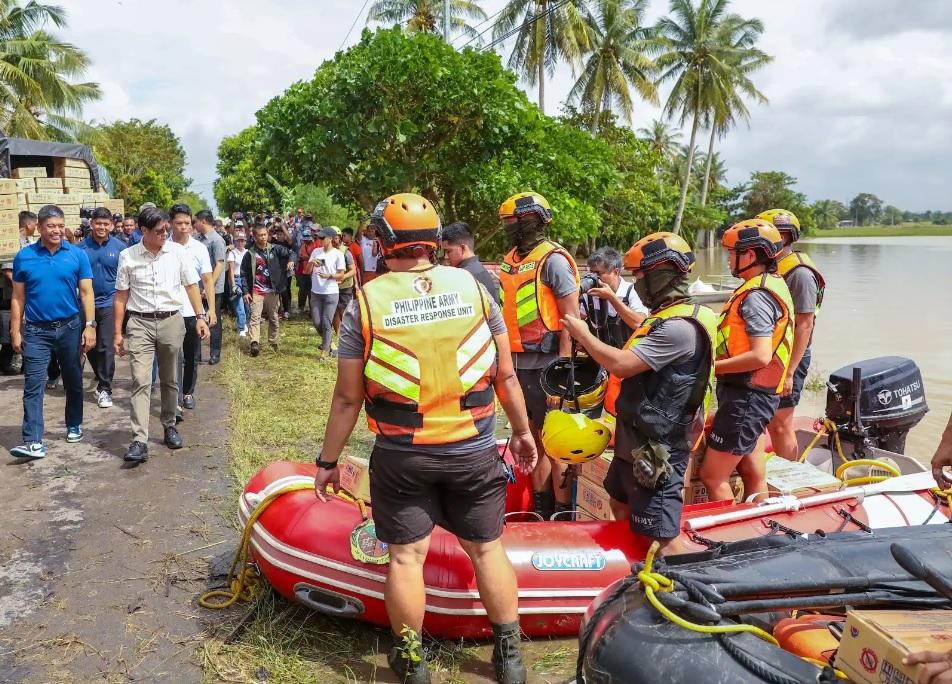Bicol River Basin Development Program to Resume: A 40-Year Revival
In a significant move for flood control and regional development, the Marcos administration is poised to restart the civil works of the Bicol River Basin Development Program (BRBDP) after four decades of dormancy. The Department of Public Works and Highways (DPWH) confirmed plans to reevaluate the initiative, which was originally launched in the 1970s under the late President Ferdinand Marcos Sr. This comes after recent weather events highlighted the region’s urgent need for long-term solutions to flooding.
A New Era for Bicol’s Flood Control
During an interview on Super Radyo dzBB, DPWH Secretary Manuel Bonoan expressed optimism regarding the BRBDP’s revival as a proactive flood control measure. "So ito ‘yung pine-prepare namin and we hope that we can prepare all the detailed engineering designs, ‘yung mga flood control projects by early next year,” he stated, emphasizing the importance of strategic planning in addressing the region’s persistent flooding issues.
Bonoan acknowledged that while preparations are underway, the complexity and scale of the projects mean civil works may not commence until 2026. “But it will actually take a little time because these are many big projects so there’s a chance that we may be able to do the civil work of these projects by 2026 thereafter,” he added.
The revitalization of the BRBDP comes amid concerns raised by recent severe weather, including the devastating impacts of Tropical Storm Kristine, which highlighted the inadequacies of existing flood control measures. Marcos Jr. noted that rainfall levels during Kristine were “double” that of the infamous flooding caused by Typhoon Ondoy in 2009, underlining the need for immediate action.
Historical Context and Current Revisions
The BRBDP was initially conceived as a comprehensive development initiative aimed at addressing the socio-economic needs of the Bicol Region. However, the project was abruptly halted in 1986 when the Aquino administration took over. Now, with a renewed focus from the current administration, the initiative aims not only to enhance flood control but also to boost local economies through integrated farm-to-market road projects.
President Ferdinand "Bongbong" Marcos Jr. is particularly committed to advancing these projects, especially following the significant damages of recent storms. “That’s the proverbial problem of the Bicol River Basin. Kaya kailangan talaga nating pag-isipan (We need to think through) what are we going to do in the long-term,” he noted during a recent briefing in Camarines Sur. His comments reflect a growing awareness that without systemic changes, the Bicol Region will continue to face similar challenges with each rainy season.
Collaboration and Funding for Future Success
To facilitate the BRBDP’s revival, the DPWH is expected to collaborate with the Korean Exim Bank for funding and technical support, which could play a critical role in expediting the project’s engineering designs and construction timelines.
This partnership mirrors similar international collaborations seen in other infrastructure projects around the globe, where technology and expertise from foreign partners help local initiatives achieve their goals more effectively. Engaging with global partners not only brings financial resources but also brings innovative technologies and methodologies critical for advancing civil projects.
Benefits to the Community and Ecosystem
Revitalizing the BRBDP holds promise for multiple stakeholders. On a microeconomic level, the farm-to-market roads included in the plan could provide new economic avenues for farmers and local businesses, enhancing trade and accessibility. On a macroeconomic level, successful implementation of flood control measures could safeguard the region’s agricultural outputs, sustaining livelihoods and protecting local ecosystems.
As Bicol residents await detailed planning and further announcements, there is a sense of cautious optimism surrounding this large-scale initiative. The potential revitalization of the BRBDP offers hope for a more resilient Bicol Region that not only addresses its historical flooding challenges but also spurs economic development.
Looking Ahead
The path to renewing the BRBDP will inevitably be complex, requiring extensive coordination among various government agencies, local stakeholders, and international partners. The urgency underscored by recent climate events increases the stakes for timely implementation. As the discourse around climate change and infrastructure intensifies, the BRBDP emerges as a critical case study of how a long-dormant project can evolve toward meeting modern challenges.
The Bicol community and observers alike remain engaged as developments unfold. Feedback and discussions can be vital in shaping the direction of the program and ensuring that it meets the needs of those it aims to serve.
By prioritizing sustainable and effective solutions, the Philippines may set a precedent for future infrastructural and environmental initiatives, balancing growth with ecological integrity. Community members are encouraged to express their thoughts on how best to implement these plans. What long-term strategies do you believe are crucial for flood control in the Bicol Region? Join the conversation and share your ideas as we all look toward a safer and more sustainable future.
For more on infrastructure and environmental issues, you can check out articles on TechCrunch, The Verge, or Wired.
Stay Informed
As the scenario in the Bicol Region develops, Shorty-News will continue to provide updates and insights on this crucial project and its implications for the community and technology industry. Remember to follow our coverage for the latest information.


